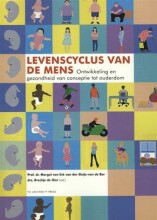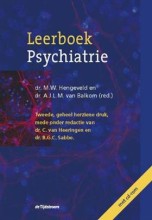Samenvatting: Advanced Medical Microbiology And Immunology
- Deze + 400k samenvattingen
- Een unieke studie- en oefentool
- Nooit meer iets twee keer studeren
- Haal de cijfers waar je op hoopt
- 100% zeker alles onthouden
Lees hier de samenvatting en de meest belangrijke oefenvragen van Advanced Medical Microbiology and Immunology
-
3 HC3 mon T-cells
Dit is een preview. Er zijn 20 andere flashcards beschikbaar voor hoofdstuk 3
Laat hier meer flashcards zien -
Dus herhaling welke T-cellen waren er en watvoor reactie veroorzaken ze?
Th1: usually by bacterials
Th17: for extracellular parasits such as bacteria and fungi that try to invade the immunesystem.
You see this in people with astma. People with astma have lots of Th2 and make a lot of mucus. Th17 react to this? Remodeling of your longs. Fibroblast help structural cells to build up a tissue. It is a mixt immune reaction.
Treg: they think the antigens are fine; for example it is just bacteria and then the turn the immune reaction down. -
3.1 B-cells
Dit is een preview. Er zijn 14 andere flashcards beschikbaar voor hoofdstuk 3.1
Laat hier meer flashcards zien -
MHC molecules present antigens. Are all MHCI or MHCII the same?
No there are lots of differentisotypes .ABC =I
other types = II.
Theseisotypes are also highlypolymorphic .
So not everyindividual has the same. And that is why one is better resistant to an antigen than an other one. -
5 HC5 fri B-cells
Dit is een preview. Er zijn 6 andere flashcards beschikbaar voor hoofdstuk 5
Laat hier meer flashcards zien -
Where are follicular dendritic cells?
Lymphoid organs:
Bone marrow, thymus, lymph nodes, spleen, tonsils, mucous membrane.
B cellfollicles inlymphoid organs can exist in either of two states: 1)quiescent (primary )follicles , which arecomposed largely of naïve B cellsmigrating extensively in search of cognateantigen and 2) activated (secondary )follicles , which contain acentral germinal center (GC ) -
5.1 T-cells
Dit is een preview. Er zijn 12 andere flashcards beschikbaar voor hoofdstuk 5.1
Laat hier meer flashcards zien -
Watvoor receptoren hebben T-cellen?
-TCR = bestaat uit deAlfa en deBeta => binden metMHC
-CDR 3 = bestaat uit de gamma en de delta => binden niet metMHC but recognize antigens: This are the intra epithelial cells. -
Zijn de alfa en beta receptoren van T cells altijd altijd hetzelfde?
Nee. Er is variatie door random genetic recombination. -
6 HC6 mon Viruses
-
6.4 SARS-CoV-2
Dit is een preview. Er zijn 21 andere flashcards beschikbaar voor hoofdstuk 6.4
Laat hier meer flashcards zien -
Hoeveel procent van de T-cellen gaan naar covid (bij een gezonde reactie)?
0.5 CD4 en 0.2 CD8
This ratio is very important. -
7 Bacterial and fungal
Dit is een preview. Er zijn 7 andere flashcards beschikbaar voor hoofdstuk 7
Laat hier meer flashcards zien -
What is the pathogenesis of cryptococcus neoformans?
1. Big cell wall (capsule) -> therefore difficult for macrophages to phagocyte it.
- The PAMP of it are B-glucan, Chitin, GXM. But it tries to hide.
2. Dendritic cells and macrophages take them up and show it on MHCII.
3. Driving it into a type 2 macrophage. Dont hit at fast as M1. This help the microbe to survive.
4. They neutralize the ROS and keep the pH high.
5. So you get a problem with the lysosome because you want a low pH there.
6. Effects MHC processing as well. -
What is the pathogenesis of streptococcus pneumoniae?
- Capsule stops phagocytosis.
- Makes hydrogen peroxide => kills other microbes and damage macrophages.
- IgA proteases => the IgA that goes trough the epithelial cells and come into the mucus.
- It can alter Penicillin resistance
- Hogere cijfers + sneller leren
- Niets twee keer studeren
- 100% zeker alles onthouden





























